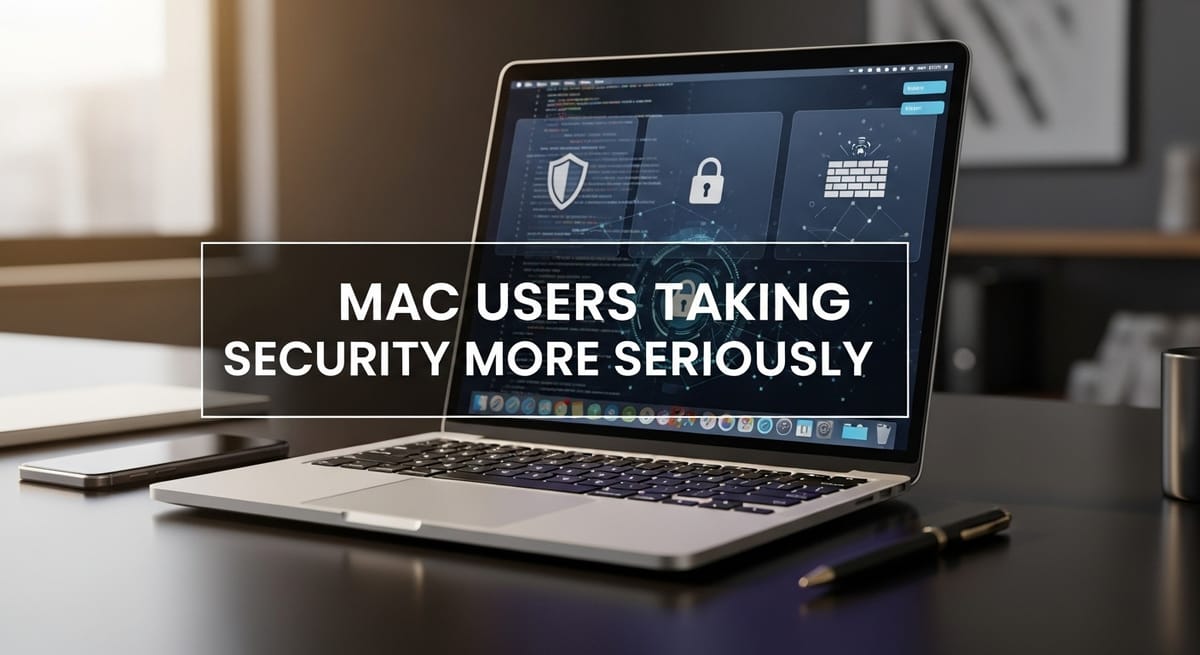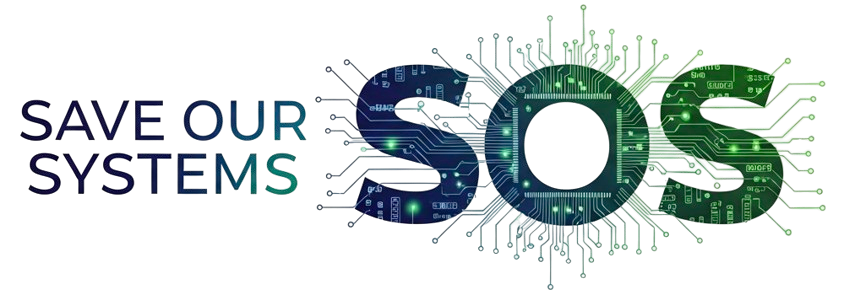From "Macs Don't Get Viruses" to "Better Safe Than Sorry": A Security Evolution

For decades, Mac users have operated with a sense of security invulnerability, bolstered by Apple's carefully cultivated image of impenetrability and the oft-repeated mantra that "Macs don't get viruses." This complacency, however, is rapidly dissolving in the face of an evolving threat landscape that increasingly targets Apple's ecosystem. Today's Mac users are experiencing a security awakening, recognizing that in the modern digital environment, no platform remains truly immune.
The End of Mac Security Complacency
The transformation in Mac users' security mindset is striking and supported by concrete evidence. According to the Ponemon Institute, 72% of Mac users now employ at least one third-party security solution, a dramatic increase from just 46% in 2019. This shift represents more than a statistical anomaly—it signals a fundamental change in how Apple's customer base perceives digital threats.
"The 'Macs are inherently secure' mindset is becoming outdated," notes security researcher Patrick Wardle from Objective-See. "Users are realizing that while macOS has strong security foundations, additional layers of protection are increasingly necessary."
Several factors have contributed to this security awakening:
- Apple's growing market share has transformed Mac systems from niche products into mainstream targets for cybercriminals seeking maximum impact
- High-profile malware incidents specifically targeting macOS have received widespread media coverage, shattering the illusion of invulnerability
- Cross-platform threats now routinely affect all operating systems regardless of manufacturer
- Enterprise adoption of Macs has introduced corporate security requirements and compliance standards to a previously consumer-focused ecosystem
The Evolving Threat Landscape
The threats facing Mac users have grown both in number and sophistication. Malwarebytes' 2024 State of Malware report documented a 40% increase in Mac-specific malware detections between 2022 and 2023, with increasingly advanced attack methodologies emerging.
Among the most prevalent threats:
Adware and Potentially Unwanted Programs
These remain the most common Mac infections, with variants like Shlayer and Bundlore leading the pack. Unlike their often-clumsy predecessors, modern Mac adware employs sophisticated techniques to evade detection, including code signing to bypass Gatekeeper and creative methods to gain persistent access.
Zero-Day Exploits
The frequency of macOS-targeted zero-day vulnerabilities has increased substantially. ESET's Threat Report identified a 26% increase in Mac-targeted attacks between 2022 and 2023, with sophisticated threat actors increasingly including Apple platforms in their arsenals.
Supply Chain Attacks
Third-party software repositories and development tools have become vectors for introducing malware into otherwise secure systems. The XcodeSpy malware in 2023 demonstrated how attackers could target developers directly, potentially compromising countless downstream applications.
Social Engineering
Sophisticated phishing campaigns now specifically target Mac users with convincing Apple-themed lures. These attacks bypass technical security measures by manipulating users directly, highlighting the importance of security awareness alongside technical controls.
"Attackers follow the money and the data," explains Thomas Reed, Director of Mac and Mobile at Malwarebytes. "As Macs have become more prevalent in high-value environments like enterprise and creative industries, the incentives for targeting these systems have grown exponentially."
The New Security Playbook
In response to these growing threats, Mac users are implementing comprehensive security approaches that go far beyond Apple's built-in protections:
System-Level Hardening
Smart users are maximizing macOS's native security features:
- FileVault encryption: Protecting data at rest through full-disk encryption, ensuring that even if a device is physically compromised, the data remains inaccessible
- Gatekeeper configuration: Restricting software installation sources to prevent malware from being inadvertently installed
- Firewall activation: Controlling network traffic and preventing unauthorized connections to and from the system
- Regular updates: Maintaining current macOS and application versions to patch vulnerabilities before they can be exploited
Strong Authentication Practices
Authentication has become a primary focus:
- Robust password policies: Implementing complex, unique passwords for each service
- Two-factor authentication: Enabling 2FA for Apple ID and critical service accounts
- Biometric security: Utilizing Touch ID or Apple Watch authentication for convenient but secure access
- Auto-logout configurations: Setting appropriate timeouts for inactive sessions to prevent unauthorized access to unattended devices
Third-Party Security Solutions
The most significant shift has been the growing adoption of security tools once considered unnecessary for Mac users:
- Anti-malware software: Dedicated Mac security solutions from vendors like Malwarebytes, CrowdStrike, and Objective-See
- VPN services: Securing network connections, especially on public Wi-Fi networks where traffic can be intercepted
- Password managers: Enhancing credential security through generation and storage of strong, unique passwords
- Endpoint Detection and Response (EDR): Advanced threat detection and response capabilities for business environments
"The paradigm has shifted from 'Do I need security software on my Mac?' to 'Which security solutions should I be implementing?'" observes security analyst Lisa Forte. "This represents a maturation of the Mac user community."
Enterprise Leading the Charge
Organizations with Mac fleets have been at the forefront of this security evolution, implementing sophisticated frameworks that individual users are increasingly emulating:
- Mobile Device Management (MDM): Centralized configuration and security policy enforcement ensures consistent protection across all devices
- Zero Trust architectures: Requiring verification for all users and devices attempting to access resources, regardless of location or ownership
- Compliance frameworks: Meeting regulatory requirements including GDPR, HIPAA, and industry-specific standards
- Security monitoring: Implementing continuous monitoring for unusual activity or policy violations
According to Jamf's Apple Enterprise Security Benchmark Study, companies with comprehensive Mac security programs report a 62% reduction in security incidents and a 40% decrease in malware-related IT support tickets. These business practices are increasingly influencing consumer behavior as awareness grows.
Apple's Response
Apple has not remained static in the face of these challenges. The company continues to enhance its security posture:
- More frequent security updates addressing zero-day vulnerabilities
- Enhanced hardware-level security through Apple Silicon architecture
- Introduction of Lockdown Mode for high-risk users
- Expanded bug bounty programs to encourage security research
However, security researchers note that Apple could improve transparency around security issues and vulnerability disclosure processes. The company's traditional approach of security through obscurity has faced growing criticism as threats become more sophisticated.
"Apple builds excellent security foundations," says security researcher Thomas Reed, "but they're sometimes slower than necessary to acknowledge and address new threats. This creates gaps that users increasingly need to fill themselves."
The Human Element: Security Awareness
Technical controls alone cannot address all security challenges. A critical component of improved Mac security is user education:
- Understanding that Macs require active security management
- Recognizing social engineering tactics and phishing attempts
- Properly configuring privacy and security settings
- Implementing effective backup strategies to mitigate ransomware risks
The SANS Institute's Security Awareness Report indicates that organizations with dedicated security training programs for Mac users experience up to 70% fewer security incidents compared to those without such programs. This highlights that user behavior remains a critical factor in overall security posture.
Looking Forward: Security Without Compromise
As Mac users embrace stronger security practices, a key consideration has been maintaining the seamless experience that attracted them to Apple's ecosystem in the first place. The good news is that modern security solutions have evolved to provide protection without significantly impacting performance or usability.
"The best security is security that works silently in the background," explains cybersecurity expert Bruce Schneier. "When implemented properly, strong security measures shouldn't detract from the user experience that Mac users value."
This balance between protection and usability has been key to the adoption of enhanced security measures. As solutions become more intuitive and less intrusive, the barriers to implementation continue to fall.
Conclusion: A Security Culture Shift
The evolution from "Macs don't get viruses" to "better safe than sorry" represents more than just a response to increased threats. It signals a fundamental maturation in how Mac users understand their relationship with technology and risk.
This cultural shift acknowledges that security is not a product feature but an ongoing process requiring vigilance, education, and appropriate tools. While macOS remains a fundamentally secure platform with significant built-in protections, today's threat landscape demands a more proactive approach.
For Mac users navigating this new reality, the message is clear: the days of security complacency are over, but with the right knowledge and tools, staying safe doesn't have to mean sacrificing the Apple experience that users value. By embracing this security evolution, Mac users are ensuring that their digital lives remain both productive and protected in an increasingly hostile online environment.
Sources
- Malwarebytes. (2024). State of Malware Report 2024.
- ESET Research. (2024). ESET Threat Report Q1 2024.
- Ponemon Institute. (2024). State of Mac Security 2024. Commissioned by Jamf.
- IBM Security. (2024). Cost of a Data Breach Report 2024.
- Apple Inc. (2024). Apple Platform Security Guide.
- SANS Institute. (2023). Security Awareness Report 2023.
- Jamf. (2024). Apple Enterprise Security Benchmark Study.
- Objective-See. (2024). The State of Mac Malware 2024.
- Verizon. (2024). Data Breach Investigations Report.
- CrowdStrike. (2024). Global Threat Report.




